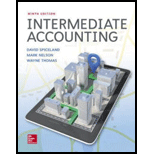
1.
Investments: Companies invest in stocks and bonds of other companies or governmental entity to deploy their excess fund, and/or for a specific business strategy.
Held-to-maturity security: The debt securities which are held by the investor with intent to hold the investment till its maturity are referred to as held-to-maturity securities.
Trading securities: These are short-term investments in debt and equity securities with an intention of trading and earning profits due to changes in market prices.
Fair value: Fair value is the price at which, both seller and buyer agree to exchange the asset. So, fair value is the selling price to the seller and the purchase price for the buyer.
Journal: Journal is the method of recording monetary business transactions in chronological order. It records the debit and credit aspects of each transaction to abide by the double-entry system.
Debit and credit rules:
- Debit an increase in asset account, increase in expense account, decrease in liability account, and decrease in
stockholders’ equity accounts. - Credit decrease in asset account, increase in revenue account, increase in liability account, and increase in stockholders’ equity accounts.
To Explain: How to classify this investment on Company T’s
2.
To journalize: The purchase $240,000,000 of 6% bonds in the books of Company T.
3.
To journalize: The receipt of semiannual interest on December 31, 2018 in the books of Company T.
4.
To journalize: The fair value changes to be recorded in the books of Company T.
5.
To indicate: The amount of investment value as on December 31, 2018 in the books of Corporation T
6.
To journalize: The
Trending nowThis is a popular solution!

Chapter 12 Solutions
Intermediate Accounting
- Please provide the correct answer to this financial accounting problem using valid calculations.arrow_forwardI am looking for help with this general accounting question using proper accounting standards.arrow_forwardPlease provide the accurate answer to this general accounting problem using appropriate methods.arrow_forward
- Raptors Inc. creates aluminum alloy parts for commercial aircraft. In a recent transaction Raptors leased a high precision lathe machine from Grizzlies Corp. on January 1, 2024. The following information pertains to the leased asset and the lease agreement: Cost of lathe to lessor $140,000 Grizzlies normal selling price for lathe 178,268 Useful life 7 years Estimated value at end of useful life 8,000 Lease provisions Lease term 5 years Payment frequency Annual Start date of lease January 1 Payment timing December 31 Estimated residual value at end of lease (unguaranteed) 20,000 Interest rate implicit in the lease (readily determinable by lessee) 7% Lessee's incremental borrowing rate 8% The lathe machine will revert back to the lessor at end of lease term, title does not transfer to lessee at any time, and there is not a bargain purchase option. Required…arrow_forwardFinancial Accountingarrow_forwardCan you please solve this financial accounting problem without use Ai?arrow_forward
- Hobbiton Tours Ltd. has the following details related to its defined benefit pension plan as at December 31, 2024: Pension fund assets of $1,900,000 and actuarial obligation of $1,806,317. The actuarial obligation represents the present value of a single benefit payment of $3,200,000 that is due on December 31, 2030, discounted at an interest rate of 10%; i.e. $3,200,000 / 1.106 = $1,806,317. Funding during 2025 was $55,000. The actual value of pension fund assets at the end of 2025 was $2,171,000. As a result of the current services received from employees, the single payment due on December 31, 2030, had increased from $3,200,000 to $3,380,000. Required Compute the current service cost for 2025 and the amount of the accrued benefit obligation at December 31, 2025. Perform this computation for an interest rate of 8%. Derive the pension expense for 2025 under various assumptions about the expected return and discount rate. Complete the following table: Case…arrow_forwardCalculate Debt Ratios and Debt to Equity Ratio for 2016arrow_forwardPlease explain the correct approach for solving this financial accounting question.arrow_forward
 Cornerstones of Financial AccountingAccountingISBN:9781337690881Author:Jay Rich, Jeff JonesPublisher:Cengage Learning
Cornerstones of Financial AccountingAccountingISBN:9781337690881Author:Jay Rich, Jeff JonesPublisher:Cengage Learning
